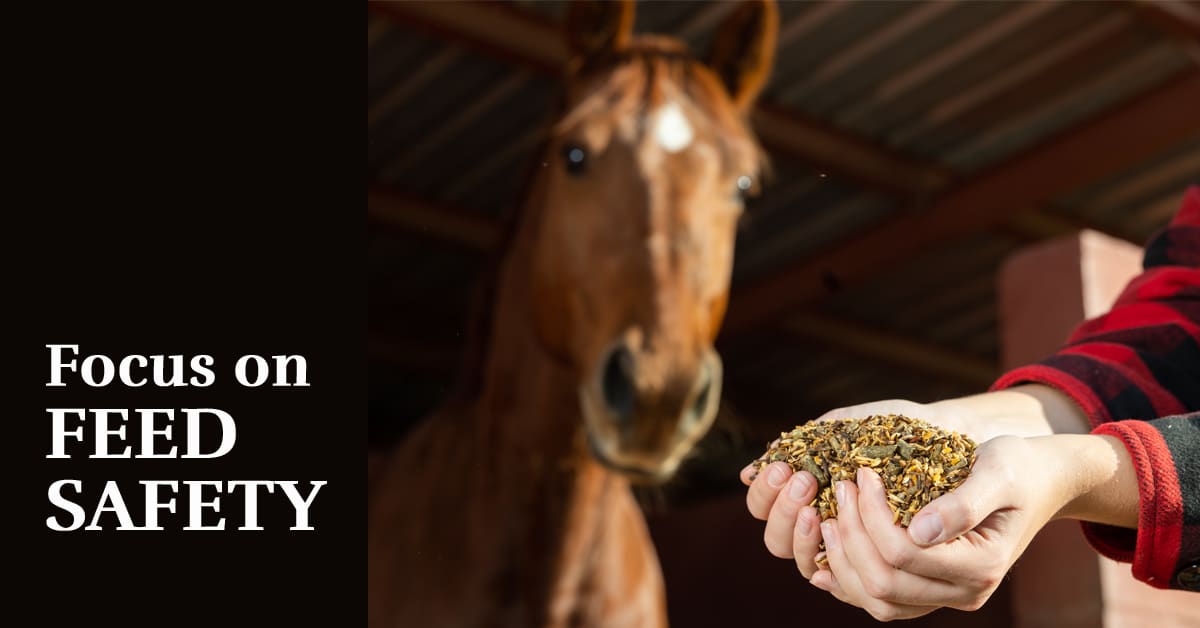Vesicular stomatitis (VS) is a disease caused by a vesiculovirus of the rhabdoviridae family that can infect horses, cattle, sheep, pigs, goats, some wild animals, and occasionally even humans. “It’s rarely fatal, but it can be nasty,” says Dr. Scott Weese, a professor at the Ontario Veterinary College in Guelph, ON, and author of the popular “Worms and Germs” blog at www.wormsandgermsblog.com. The virus, previously only seen in Mexico and the southern US, has begun a slow and steady trek northward, causing concern among veterinarians and horse owners.
Symptoms and management of vesicular stomatitis
Horses infected with the vesicular stomatitis virus will develop a fever, followed by the eruption of vesicular lesions (blisters) on their tongue and lips, and on the coronary bands of their hooves. Less commonly, they can also get blisters on the sheath or udder. The blisters are quite painful, and often cause drooling or frothing at the mouth when they appear on the tongue or lips. These vesicles rupture and leave raw areas which can become infected, ulcerative, or necrotic. Because of the pain, the horse may refuse to eat or drink (weight loss is another symptom), while blisters on the coronary band can cause lameness. The incubation period ranges between two and 21 days, and the horse is infectious until the blisters or lesions are completely healed, which usually takes at least two weeks, and in some cases up to two months.
There is no cure or specific treatment for VS. Horses may be fed cooked, soft feed if they are finding it too painful to eat their regular diets, and given anti-inflammatory medicine to reduce the pain. Owners also need to watch that the horse doesn’t develop any secondary bacterial infections in the blisters or lesions which may require treatment with antibiotics.
One very important aspect of caring for a horse with VS is reducing the risk of infecting other horses, other animals, and people who might come in contact with the animal. Horses should be isolated and any food containers, water troughs, trailers, or other shared equipment should be completely disinfected. VS is believed to be spread by mosquitoes, biting flies, and midges, or by fluid from the blisters getting into food and water or blankets and equipment shared by other horses. It’s very contagious; if one horse in a herd becomes infected, there is a very high probability of others also catching the disease – as high as 90% of the animals on the farm in some cases.
There is a vaccine against VS, but it’s problematic. While providing only limited protection against infection, it creates antibodies in the horse that will cause it to test positive for exposure to the disease – meaning that a vaccinated horse could be prevented from travelling to other areas.
Standing on guard
Vesicular stomatitis is most common in the warmer areas of North and Central America: outbreaks in Mexico are frequent, and the cases reported each year are usually in the southwestern part of the US such as New Mexico, Arizona, Texas, and more recently creeping northward into Utah and Colorado. In Canada, VS in horses has not been seen for a very long time; in fact, the last documented case was in 1949. Despite the disease’s long absence from this country, the Canadian government continues to monitor outbreaks and implement mandatory restrictions on moving horses from those areas into Canada. The most recent were implemented in 2012 when a total of 51 cases of VS were reported in New Mexico (April) and Colorado (October) by the US Department of Agriculture – the first confirmed diagnosis of VS in the US since 2010. As a result, horses from these states, or who had recently travelled to these states, were restricted from entering Canada. As of February, 2013, the Canadian Food Inspection Agency (CFIA) confirmed that all outbreaks had been resolved, and restrictions lifted.
Dr. Weese thinks that despite such a long and positive track record, there continues to be some risk of the disease coming to Canada. “Horses today are very mobile. Many Canadians compete in the US or buy horses from the US and this increases the risk of the disease moving into this country,” he explains.
Cause for concern
Dr. Weese says that while the insects that carry the disease don’t migrate very far north, he acknowledges that climate change may gradually increase their range, as it has with some other infectious diseases. “The main reason we are concerned about this, even though no cases have been seen in Canada for many decades, is that the disease can be passed from horses to other animals, including cattle and sheep,” explains Dr. Weese. “When people see the lesions or blisters on cattle, they have to assume it is foot-and-mouth disease, and this is a huge issue.” Foot-and-mouth disease is much more serious and in order to contain it, large numbers of animals may have to be killed. (Horses are not affected by foot-and-mouth disease.) Laboratory tests can distinguish between the two, but they take time. Because of this serious threat to livestock, veterinarians are required to report any cases of VS they see to the CFIA.
Dr. Weese adds that humans can also be infected with vesicular stomatitis, but rarely get the blisters in their mouths that animals develop. Instead, the symptoms include fever, headache, muscle ache and fatigue. If you find yourself working around a horse which has been diagnosed with VS, be sure to wear latex gloves and avoid any direct contact with the animal’s blisters.
“This is just one example of a disease that has been eradicated in Canada, but not in other parts of the world, and that could be brought back into Canada again if we are not careful,” Dr. Weese warns. Horse owners need to be aware of the risks, and be diligent to prevent the spread northward of this persistent disease.
The Latest









